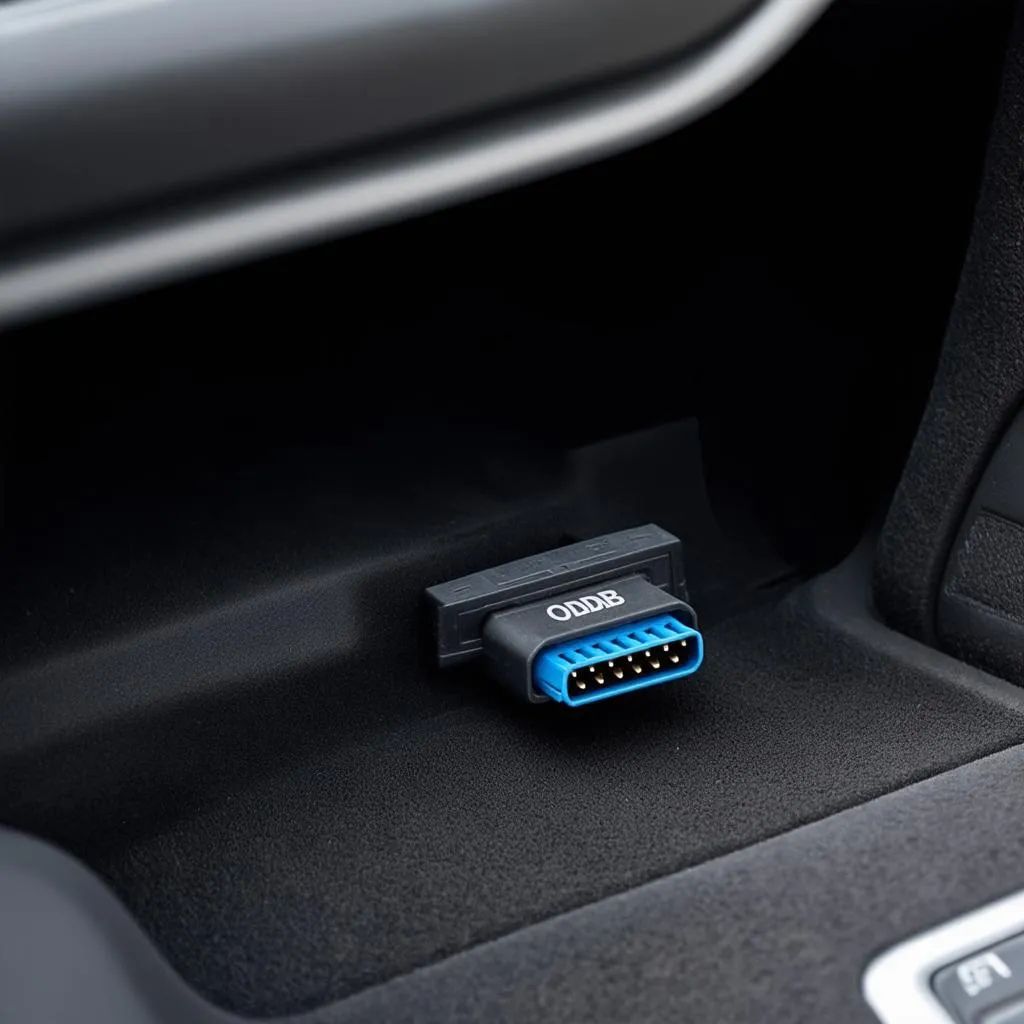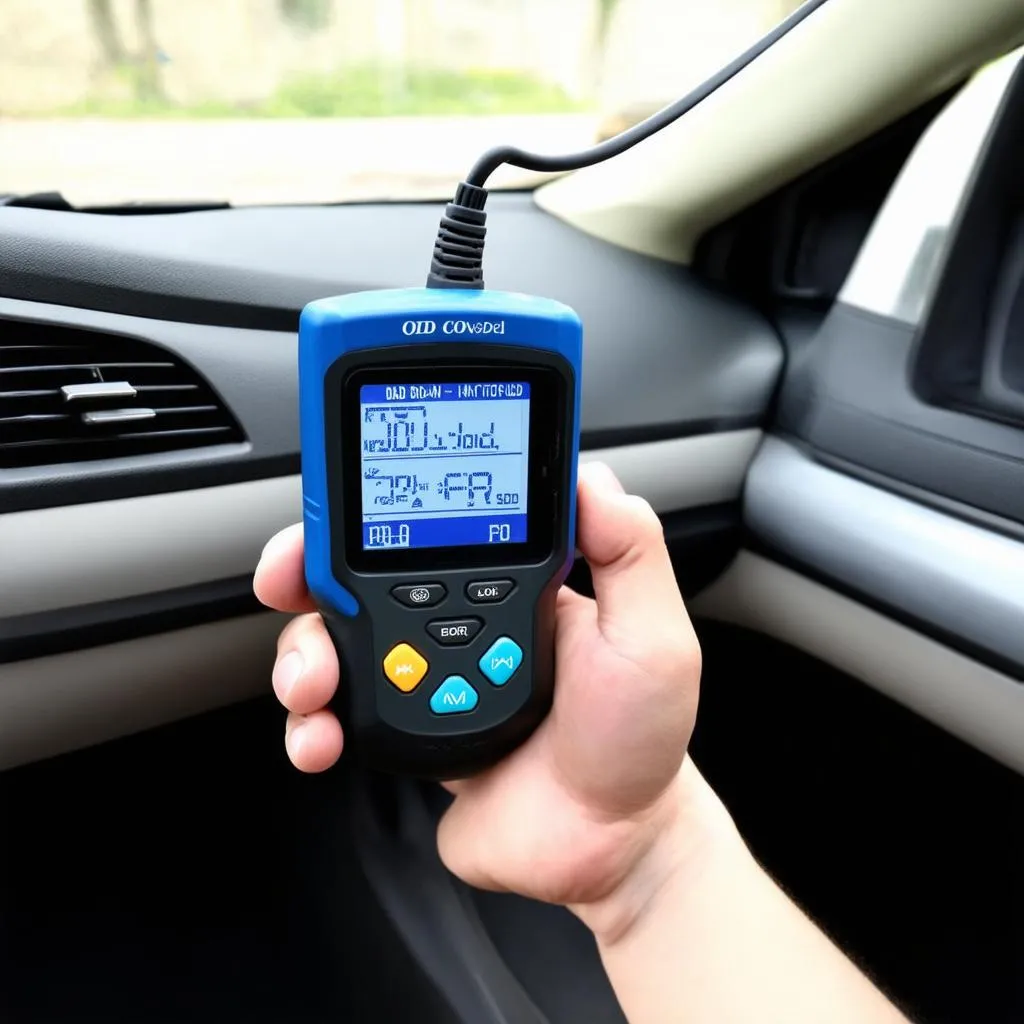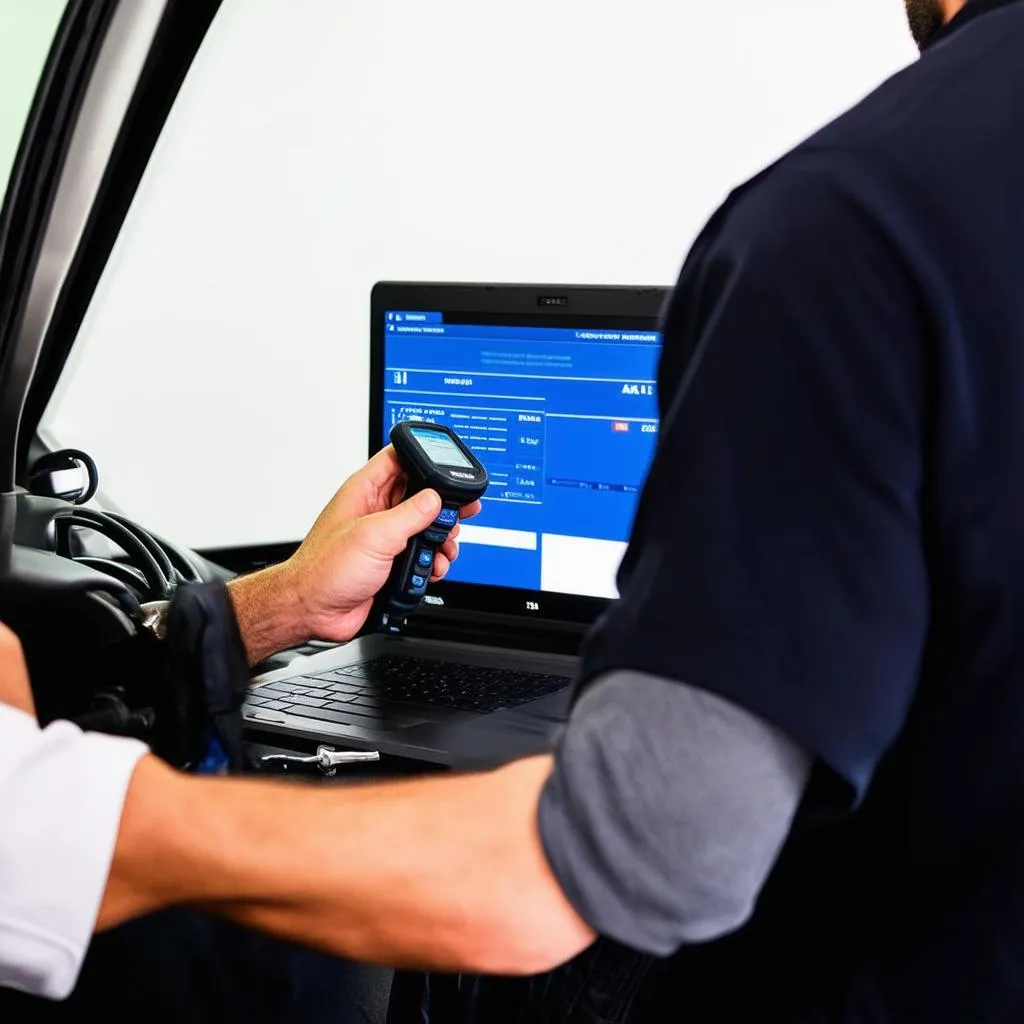“There’s a strange light on my dashboard, and my car is making a weird noise. What do I do?” This is a question many car owners have asked themselves at one point. Understanding the OBD system can help you diagnose car problems and get them fixed quickly and easily.
What Is Obd In Automotive?
OBD, which stands for On-Board Diagnostics, is a standardized system used to monitor and diagnose a vehicle’s engine and other vital systems. It’s like having a built-in doctor for your car, constantly checking its health. Imagine it as the car’s internal communication system, relaying information to the driver and technicians.
The History of OBD
The concept of OBD emerged in the 1980s with the aim of reducing emissions and improving vehicle performance. This paved the way for a standardized system that would benefit car manufacturers and drivers alike.
The first version, OBD-I, was introduced in the late 1980s and focused primarily on emissions. The more advanced OBD-II, introduced in 1996, became the standard for all vehicles sold in the United States and many other countries.
How does OBD Work?
OBD works by using a network of sensors and actuators throughout the vehicle to monitor various parameters like:
- Engine speed
- Fuel system performance
- Airflow
- Emissions
- Transmission operation
- Oxygen sensor readings
This data is then transmitted to the car’s computer, known as the Engine Control Unit (ECU). The ECU analyzes this information and determines if any problems exist.
Benefits of OBD:
- Diagnosing Car Problems: When a problem is detected, the ECU triggers a Diagnostic Trouble Code (DTC), which is essentially an error code that provides insight into the specific issue. These codes are essential for technicians to quickly identify and address problems.
- Reducing Emissions: By monitoring engine performance and ensuring optimal combustion, OBD helps reduce harmful emissions, contributing to a cleaner environment.
- Improving Fuel Efficiency: By optimizing engine performance and identifying problems that could affect fuel consumption, OBD contributes to better fuel efficiency.
- Lower Maintenance Costs: Early detection of problems through OBD can prevent major repairs and save you money in the long run.
OBD and You
You can access this valuable information using a OBD scanner, which is a handheld device that plugs into the OBD-II connector, typically located under the dashboard.
These scanners allow you to:
- Read DTCs
- Monitor live data
- Clear DTCs
- Reset maintenance lights
- Perform various other functions depending on the scanner’s capabilities.
Some OBD scanners can even be connected to your smartphone, allowing you to monitor your car’s health remotely.
What’s Next?
As the automotive industry evolves, OBD technology continues to advance, leading to even greater benefits for drivers.
Here are some of the latest developments in OBD:
- OBD-III: A new generation of OBD is under development, promising even more data and capabilities.
- Connected Cars: OBD data is being increasingly integrated with connected car features, enabling remote monitoring, diagnostics, and even automated vehicle maintenance.
- Advanced Diagnostics: OBD is being used to develop sophisticated diagnostic tools that can identify and resolve problems more effectively.
Questions You Might Be Asking:
Where is the OBD Port located?
Most cars have the OBD-II port located under the dashboard, near the steering column.
What is a Diagnostic Trouble Code (DTC)?
DTCs are error codes generated by the ECU when a problem is detected. These codes can be read by OBD scanners and provide information about the specific issue.
How do I use an OBD Scanner?
Most OBD scanners are relatively user-friendly. They come with instructions and can guide you through the process of reading DTCs, monitoring live data, and performing other functions.
What are some popular OBD scanners?
There are many different OBD scanners available on the market, ranging in price and features. Some popular options include the Actron CP9680 OBD-II Autoscanner, the BlueDriver Bluetooth OBD2 Scanner, and the OBDLink MX+ Bluetooth OBD2 Scanner.
Can OBD scanners help me pass emissions testing?
Some OBD scanners can be used to check for emissions-related codes and prepare your car for emissions testing.
Are there any risks associated with using OBD scanners?
Using OBD scanners is generally safe. However, it’s important to ensure you’re using a reputable scanner from a trusted source. Avoid using scanners from unknown brands or sources, as they could potentially damage your vehicle’s electronics.
OBD and Your Car’s Future:
OBD technology is constantly evolving, leading to smarter, more connected vehicles. This technology allows car owners to better understand their car’s health and performance, ultimately leading to a more enjoyable and stress-free driving experience.
Want to Learn More?
Visit our website, TechCarUSA, to learn more about OBD and other automotive technology topics.
Need Help?
For help with diagnostics or other car-related issues, contact our team of certified technicians. We’re available 24/7 via WhatsApp at +84767531508.
 obd-port-location
obd-port-location
 obd-scanner-device
obd-scanner-device
 car-diagnostics-technician
car-diagnostics-technician
Remember, your car is more than just a machine; it’s a companion on your journey. Understanding the OBD system is like getting to know your companion better, helping you make informed decisions about its care and maintenance.
Feel free to leave a comment below if you have any questions or would like to share your own OBD experiences.